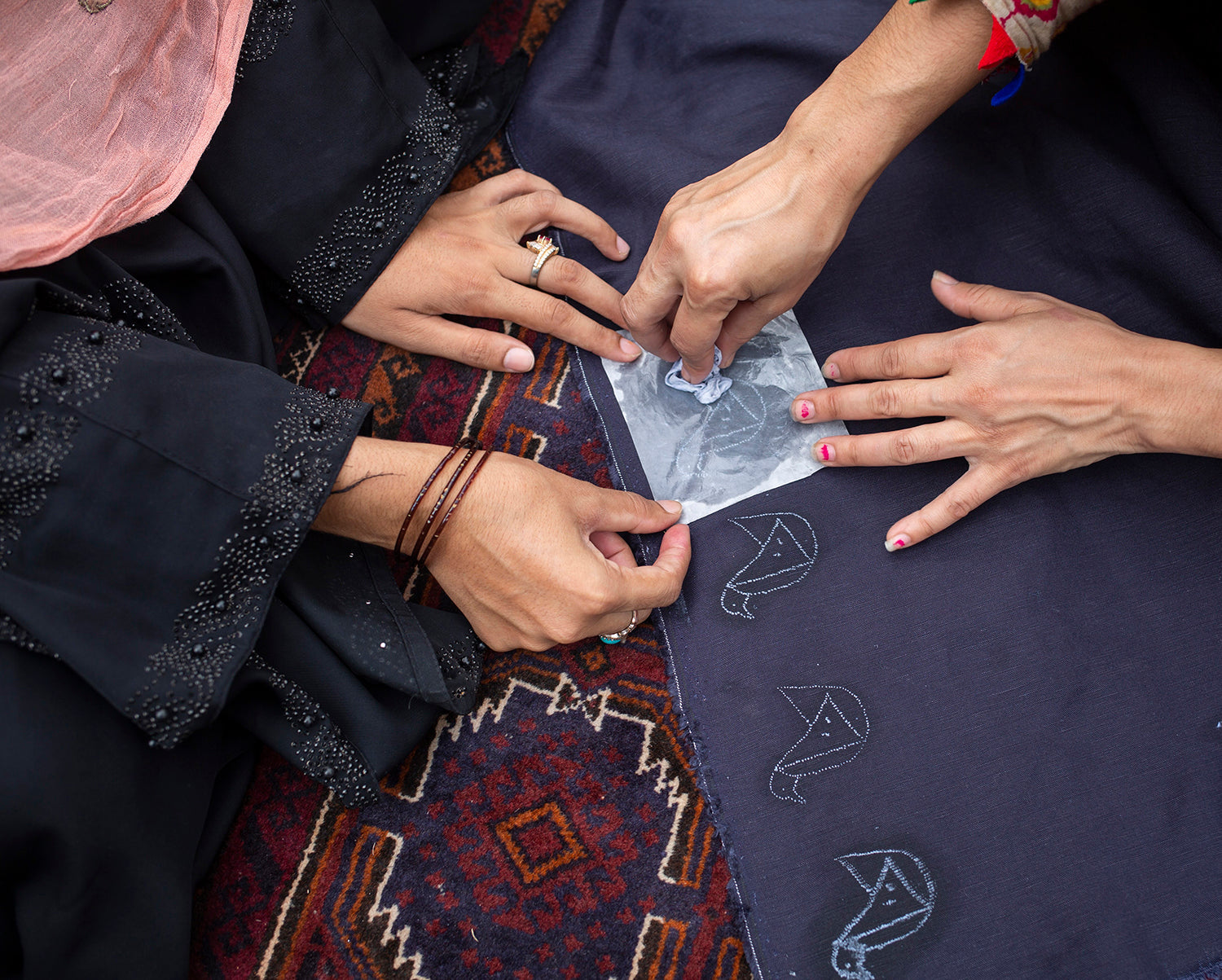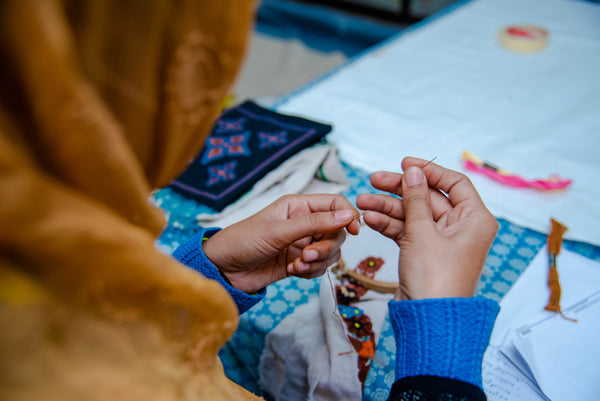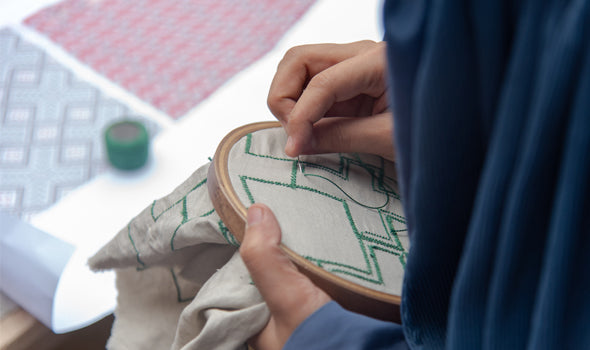
Tarshumar
This technique, also known as Hazara embroidery, first originated from central Afghanistan. ‘Tar’ means thread, and ‘shumar’ means counting – this embroidery technique is very fine and precise. It is known to be a work of art, embroidered on materials such as silk and cotton. The designs are usually based on rectangles and are multi-colored. They are worked in silk thread on a cotton ground, using a brick stitch or short satin stitches, with dividing lines worked in black and white, or even gold.




